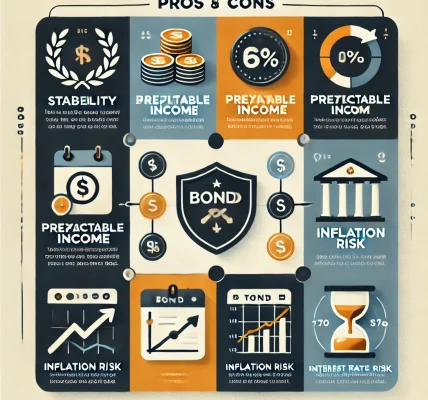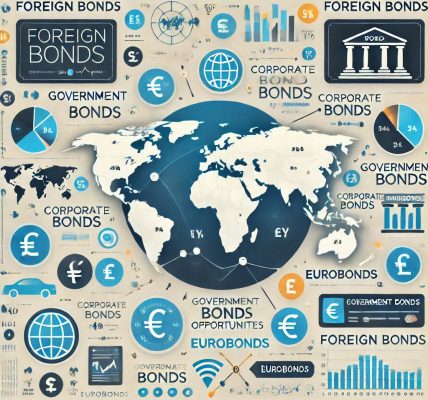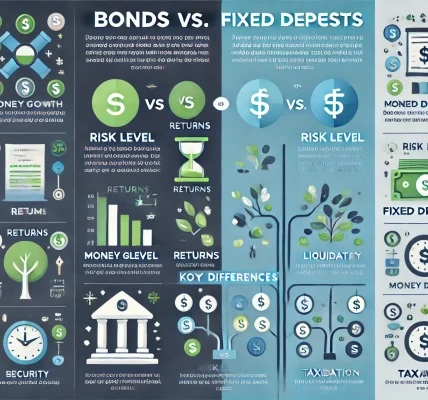High-yield bonds, often referred to as “junk bonds,” are a class of debt securities that offer higher interest rates compared to investment-grade bonds. However, these bonds come with a higher level of risk. While they can provide attractive returns for investors willing to take on additional risk, it’s crucial to understand what high-yield bonds are, how they work, and whether they’re worth the potential risks.
In this blog, we’ll dive into what high-yield bonds are, why they offer higher returns, and the risks involved. We’ll also discuss whether they could be a suitable investment option for you and how you can use them in your investment strategy.
What Are High-Yield Bonds?
A high-yield bond is a bond issued by a corporation, government, or other entity that is rated below “BBB” by Standard & Poor’s or below “Baa” by Moody’s. These lower ratings indicate that the issuer is considered to have a higher risk of default compared to investment-grade bonds.
High-yield bonds are often issued by companies with weaker financial positions, such as startups, companies with high levels of debt, or those operating in volatile industries. Because these companies are seen as riskier, they must offer higher interest rates to entice investors to buy their bonds.
The higher yield compensates investors for taking on the additional credit risk associated with these bonds. As a result, the interest rates on high-yield bonds are significantly higher than those of safer, investment-grade bonds.
Why Do High-Yield Bonds Offer Higher Returns?
The primary reason high-yield bonds offer higher returns is that they come with greater risk. The risk factors that influence the yield on these bonds include:
- Credit Risk: The issuer’s ability to make timely interest payments and repay the bond’s principal is less certain compared to more stable, investment-grade companies. This increases the risk of default.
- Interest Rate Risk: High-yield bonds tend to be more sensitive to changes in interest rates than investment-grade bonds. If interest rates rise, the value of these bonds could drop, as investors may prefer newer bonds with higher yields.
- Economic and Sector-Specific Risks: Companies issuing high-yield bonds may be more vulnerable to economic downturns or challenges within their specific industry. These factors can impact their ability to meet their debt obligations.
- Liquidity Risk: High-yield bonds may not trade as frequently as investment-grade bonds, making them harder to sell if needed. This could limit your ability to quickly exit the investment.
The Risks of High-Yield Bonds
While high-yield bonds can be appealing due to their higher returns, it’s important to understand the risks involved. Here are the key risks associated with investing in high-yield bonds:
1. Credit Risk
As mentioned earlier, high-yield bonds are issued by companies with lower credit ratings, which means they have a higher chance of defaulting on their debt obligations. If a company fails to make its interest payments or goes bankrupt, bondholders may lose part or all of their investment.
2. Interest Rate Risk
High-yield bonds are also susceptible to interest rate changes. If the central bank raises interest rates, the value of existing high-yield bonds can decrease, as investors may demand higher yields from new bonds issued. As a result, the price of your high-yield bond could fall, especially if you need to sell before maturity.
3. Economic and Sector Risk
The performance of high-yield bonds is heavily influenced by the economic environment. In times of economic expansion, high-yield bonds may perform well as companies increase profits and reduce default risk. However, during recessions or economic downturns, high-yield bonds are more likely to underperform, as companies in weaker financial positions may face greater challenges.
4. Liquidity Risk
High-yield bonds are not as liquid as government bonds or investment-grade bonds. In times of market stress, it may be difficult to sell high-yield bonds quickly, and you may have to accept a lower price than expected. This is especially true for smaller issuers or bonds in less popular sectors.
Are High-Yield Bonds Worth the Risk?
Whether or not high-yield bonds are worth the risk depends on your investment goals, risk tolerance, and overall portfolio strategy. Here are some factors to consider when evaluating high-yield bonds:
1. Risk Tolerance
If you’re an investor with a high-risk tolerance and a long-term investment horizon, high-yield bonds may be a suitable option for you. They can provide a steady stream of income through higher interest payments, which can be particularly appealing if you’re looking for income-producing assets.
However, if you’re risk-averse or have a shorter investment timeline, high-yield bonds may not be the best choice due to the potential for volatility and loss of principal.
2. Diversification Benefits
High-yield bonds can add diversification to your portfolio, especially if you’re already heavily invested in stocks or safer fixed-income assets. Because they have a different risk profile compared to government bonds or investment-grade corporate bonds, high-yield bonds can help balance your portfolio’s overall risk.
Incorporating high-yield bonds into a diversified portfolio, alongside equities, government bonds, and other asset classes, can potentially enhance overall returns while managing risk.
3. The Need for Active Management
Due to the increased risks of high-yield bonds, it’s essential to actively manage your exposure. You may want to consider using a bond fund or exchange-traded fund (ETF) that specializes in high-yield bonds. These funds are managed by professionals who have the expertise to assess credit risk and sector-specific risks. Additionally, funds often provide greater diversification, which can help mitigate some of the risks associated with individual bonds.
4. The Role of High-Yield Bonds in a Rising Interest Rate Environment
If interest rates are expected to rise, high-yield bonds may face challenges, as their prices could decline. However, if inflation is also rising, high-yield bonds may offer better protection compared to traditional bonds because they tend to offer higher yields. In such cases, high-yield bonds may be able to provide better returns than other fixed-income options.
How to Invest in High-Yield Bonds
There are a few ways to invest in high-yield bonds:
- Individual Bonds: If you have the expertise, you can buy individual high-yield bonds directly from the market. However, this requires a good understanding of credit risk and the financial health of the issuing companies.
- Bond Funds and ETFs: These funds pool money from multiple investors to purchase a diversified portfolio of high-yield bonds. This offers exposure to high-yield bonds without the need to select individual bonds.
- Robo-Advisors: Some robo-advisors offer portfolios that include high-yield bonds, making it easier for beginner investors to gain exposure to this asset class.
Conclusion
High-yield bonds can be a compelling investment option for those seeking higher returns and willing to take on more risk. While they offer higher yields than safer, investment-grade bonds, they come with significant credit, interest rate, and economic risks. It’s crucial to carefully consider your risk tolerance, investment objectives, and overall portfolio strategy before investing in high-yield bonds.
For investors who are willing to manage these risks and seek income-generating opportunities, high-yield bonds can provide an attractive addition to a diversified portfolio.




